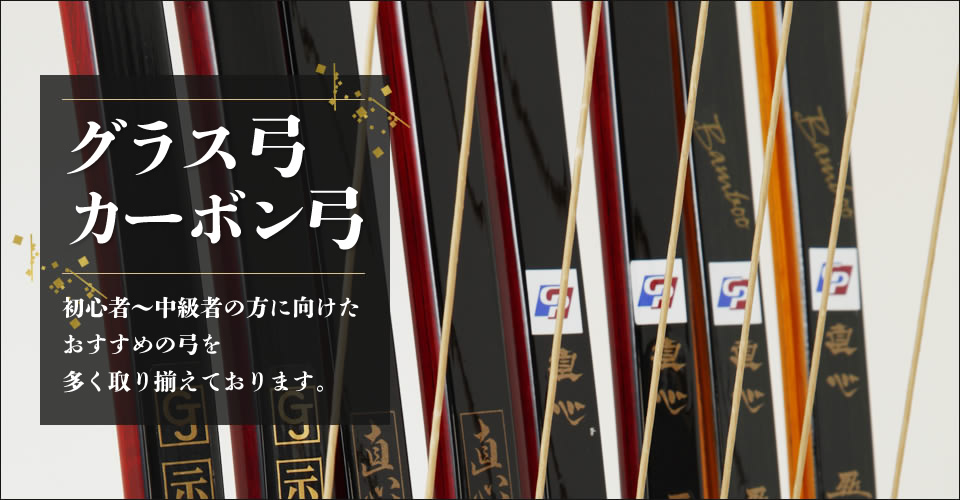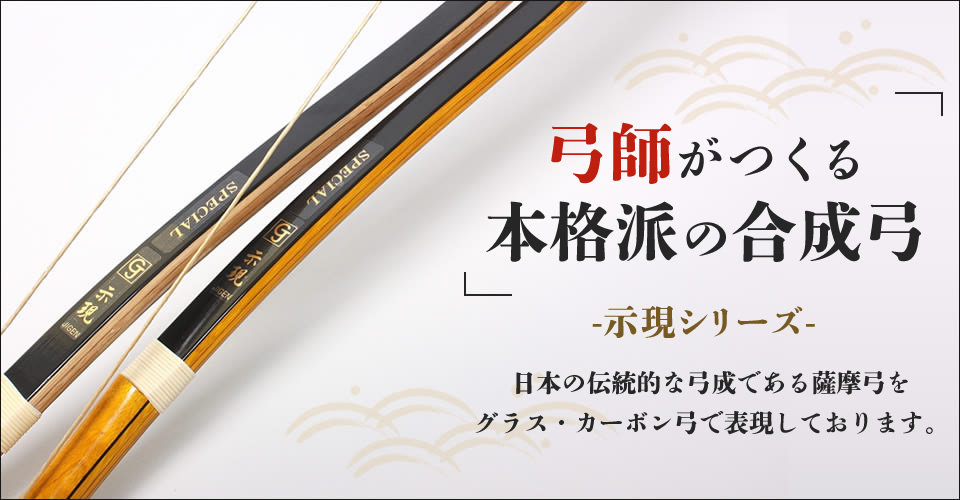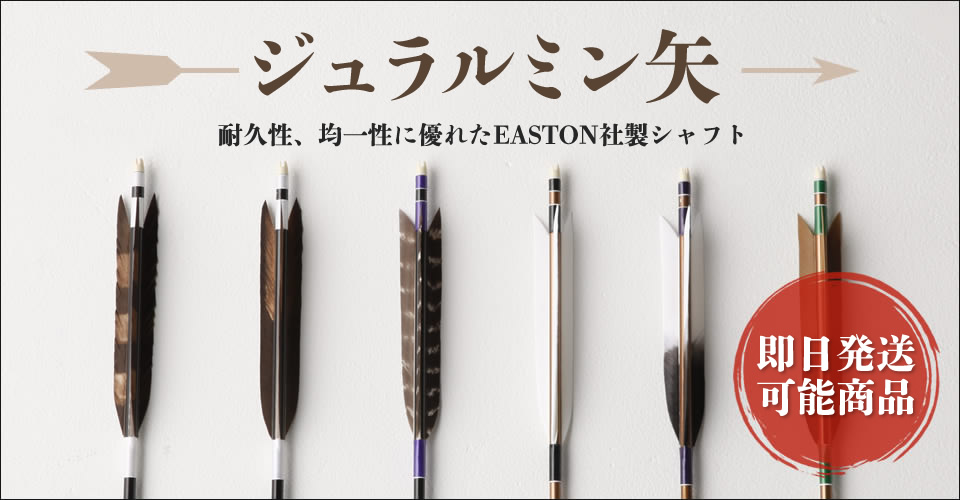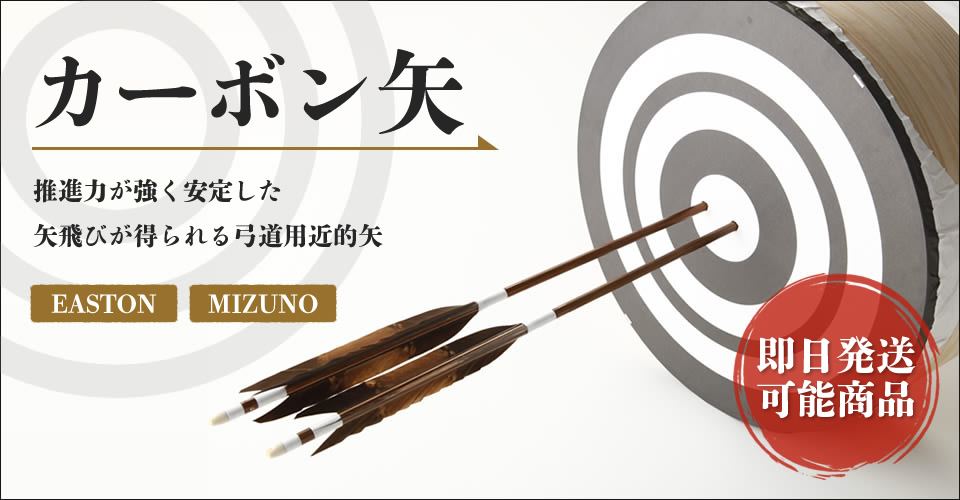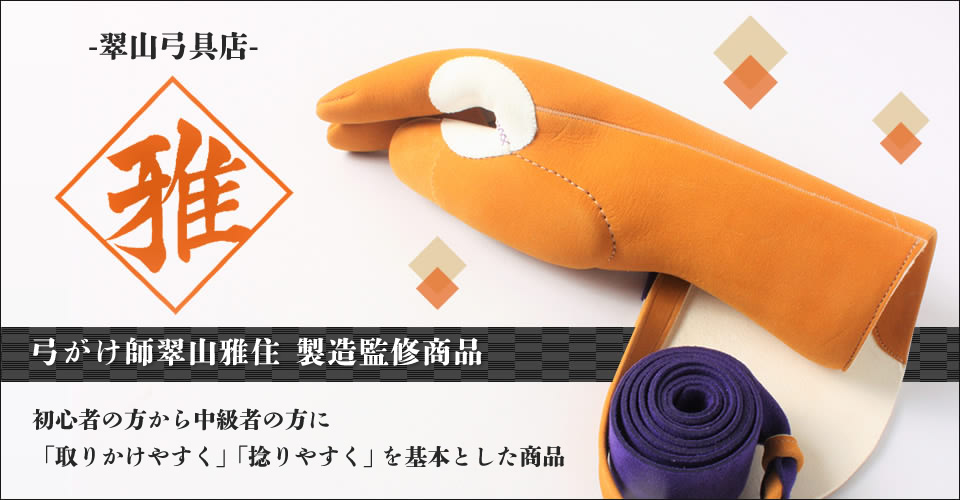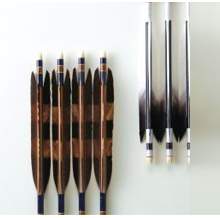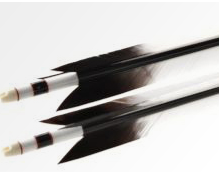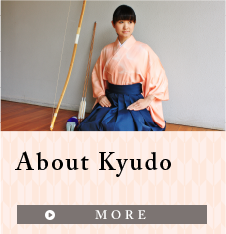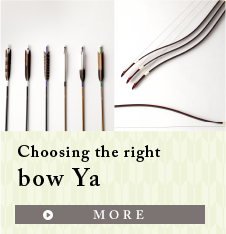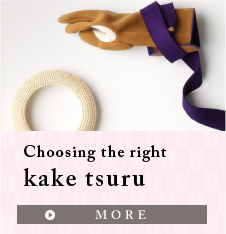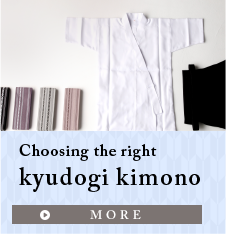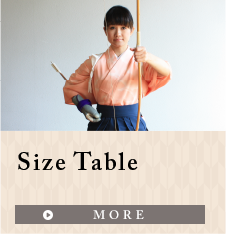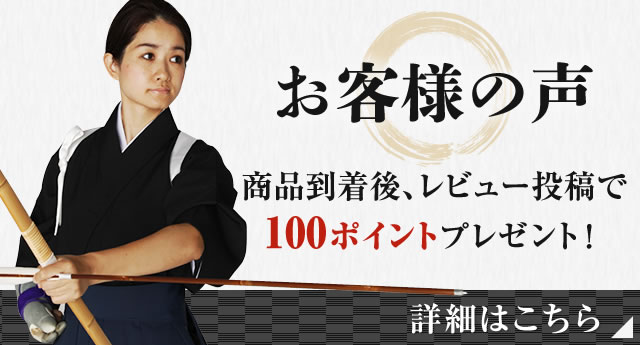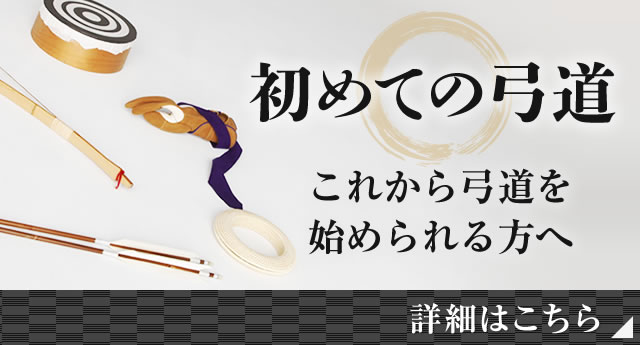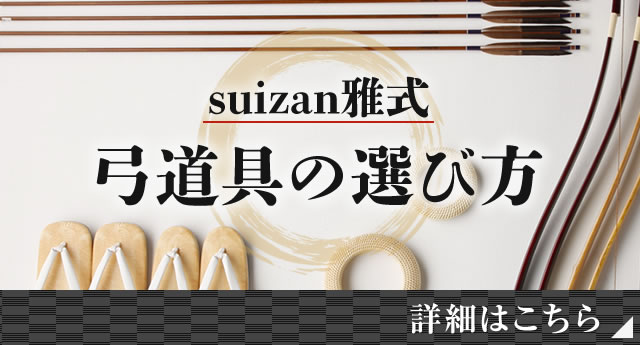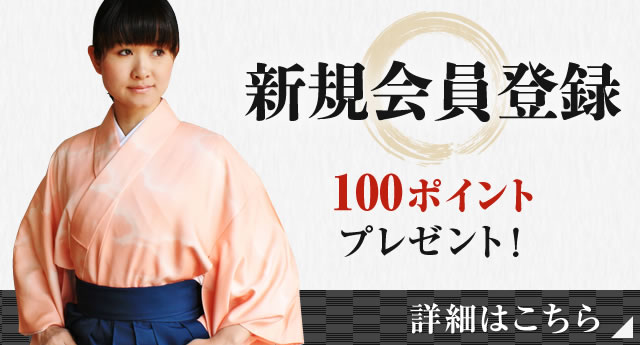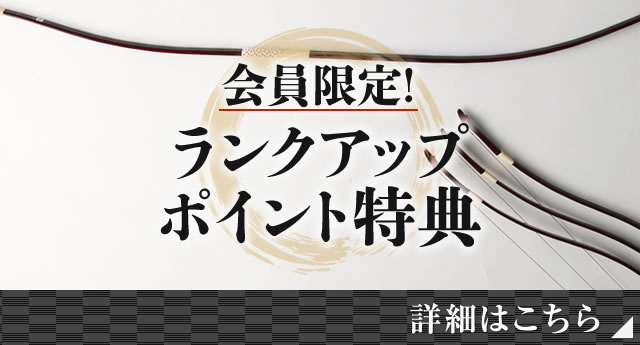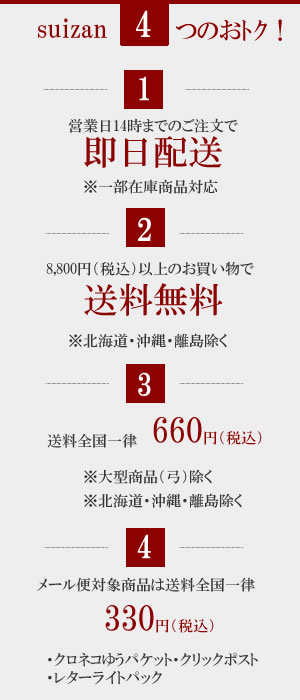International kyudo
Kyudo Equipment Selection Advice. Choosing the right YUMI : Bow

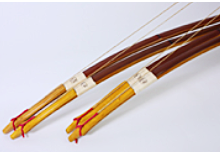
●Yumi have a long history in Japan, and the bow itself is longer than those used in other parts of the world.
●The standard length of the Yumi used to practice Kyudo is 221cm,
However it is vital that the size of the Yumi and the practioner's Yazuka
(see below) be in perfect accord.
●In Kyudo, Yazuka is the main criterion for determining the proper Yumi size.
●Yazuka is also the essential criterion for determining the length of a practitioner's arrows (Ya).
The method of measuring the Yazuka is illustratedas below.

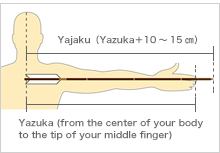
Yazuka Measurement:
Standing upright, stretch the left arm fully out to the side, and
measure from the center of one's body to the very tip of the
middle finger of the left hand.
(One can also say this is the draw length when practicing Kyudo).

※ The diagram presents the general criteria for determining one's Yumi size,
but the practitioners height should be also taken into consideration.


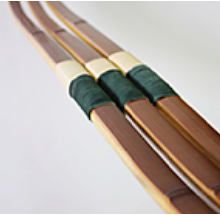
●Every TakeYumi has has its own personality.
No two are alike, even when they are made by the same craftsman, and have the same size and draw weight.
●Constructed by laminating a bamboo inner layer, a core of 5-7 pieces of hardwood and bamboo, and an outer layer of bamboo.
●The symbol of Kyudo.
Fully embodies the unique features, beauty, and depth of Kyudo.
In Japanese, the first kanji of 弓道(Kyudo) means Yumi, and the importance of its role in Kyudo is obvious.
●The longer a bamboo Yumi is used to practice Kyudo, the easier it becomes for the practitioner to connect with it, and the sooner the practitioner and the Yumi become one.
●Most of contemporary bamboo Yumi are made with synthetic adhesives. So they are relatively easier to manage and maintain, and not that easy to damage or break compared to the yumi made with traditional natural adhesives.
Most contemporary bamboo Yumi are made with synthetic adhesives, so compared to Yumi made with traditional adhesives, they are easier to manage and maintain, and are not as easily damaged or broken.
●There is no rule stating that only practitioners of middle ranks(dan) and above can practice Kyudo with TakeYumi. Beginners can also find practicing Kyudo with TakeYumi very enjoyable.

●A hybrid of carbon and bamboo. Instead of the core of hardwood and bamboo, the middle layer of Yumi is the core of carbon, hardwood and bamboo.
●Combines the elegance of Kyudo with modern materials.
●Product of contemporary innovation.
Event hough it is hard to distinguish a carbon insert TakeYumi from an all-natural TakeYumi, carbon insert TakeYumi is still not viewed as a genuine bamboo Yumi.
Some characterize it as a new genre of Yumi.

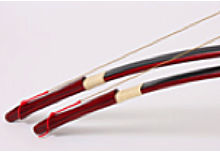
●Substitute for all-natural bamboo Yumi.
●Mass production Yumi. Rather sustainable and endurable.
●Easier for a complete novice to use and hit the target make it
popular and widely used among Kyudo beginners and students.
●Most product lines are reasonably priced and easier to obtain.

●Kyudo Yumi Size: please measure your Yazuka and choose the correct size of Yumi accordingly.
●When a Yumi is too long, the arrow speed may drop.
And a shorter Yumi is more easily damaged than correct size.
It is best to choose a Yumi that is right for you.
●Draw weight of Kyudo Yumi:
use your the draw weight of the Yumi you are currently practicing with as a guide to choosing the correct draw weight. If you are not certain about what draw weight to choose, we strongly suggest that you consult your Kyudo instructor.
●Over time, the draw weight of a bamboo Yumi may drop 1-2kg, while a synthetic Yumi may drop 0.5kg.
In some cases, the draw weight may drop considerably after about ten years.

※The Yazuka is not the full length of the Ya.
> Yajaku: the full length of the ya
(especially for beginners, for safety we recommend that this be 10-15cm more than the Yazuka)
> Yazuka: the distance from the center of one’s throat to the tip of middle finger of left hand when standing upright.(see below).
Please refer to the diagram below for yajaku and yazuka : Ya


●Handcrafted with all-natural bamboo.
●Custom-made; personal touches are possible.
The favorable weight and diameter of TakeYa could be chosen and crafted to meet customer requirements.
●Normally sold in a set of 4 Ya.

●Easton shaft; comparatively durable and not so easy to break or damage.
●Normally fletched with turkey feathers.
●The shape and characteristics of duralumin ya will not be affected by temperature or humidity.
●Identical specifications: shaft weight and thickness are standardized.
●Competitive price ranges, popular among Kyudo beginners and students.
●The shaft should be chosen in accordance with the practitioner's Ya length, as well as the size and
draw weight of the Yumi.
●Normally sold in a set of 6 Ya.

●Choose your preferred material.
●Bamboo and synthetic ya will have different flight speeds.
●The best choice is to make sure the specifications of chosen ya are in accord with your yumi size and draw weight.
●For best results, we suggest choosing Ya by taking your yumi specifications into consideration rather than just choosing from personal preference.

●1913 : Duralumin Ya・7623: Carbon Ya
【Yazuka : around 85~95cm, Draw weight of Yumi : around 8Kg~12Kg】
●2015 : Duralumin Ya・8023 : Carbon Ya
【Yazuka: around 90~100cm, Draw weight of Yumi: around 12Kg~17Kg】
The advice above is for reference only.
If you have any doubts or questions, please consult your instructor.
※Advice for deciding Ya length
For experienced Kyudo practitioners, approximately : Yazuka +10 cm
For Kyudo beginners, add additional length for safety : Yazuka+10~12cm.




